Ruby-Red, Fragrant Fraises des Bois: Life’s Sweetest Little Luxuries…
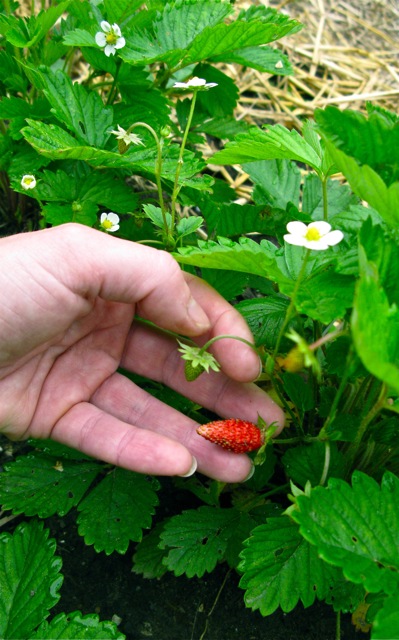 Fraises des Bois, or alpine strawberries, offer a continuous supply of summertime fruit – Photo â“’ Michaela at TGE
Fraises des Bois, or alpine strawberries, offer a continuous supply of summertime fruit – Photo â“’ Michaela at TGE
Oh the magic of Fraises des Bois! To me, they look as if they belong at the center of a tiny table in an enchanted forest; one set just for leprechauns, fairies, nymphs and elves. Alpine strawberries (Fragaria vesca) are fragrant, delicious and easy to grow. Sometimes called ‘the wood strawberry’, this rose-relative is a separate species from the common garden strawberry, (Fragaria x ananassa), and is native to North America, Europe, northern Africa and some parts of Asia. Unlike their runner-forming cousins, these lovely mounded plants produce fruit throughout the growing season – spring to fall. Many cultivars are available, including the delightful red ‘Alexandra’ and ‘Mignonette’, and for the more kaleidoscopic plate, there are even white and yellow alpine strawberries! Strawberries of all kinds are best planted out to the garden in early spring – but it is important to prepare the site well in advance (unless you are growing in containers). So if you would like to grow alpines in your potager next year – read on….
Alpine strawberries are herbaceous perennials (the foliage dies back in fall and then returns from hardy roots in spring). Many cultivars are very cold hardy (some to -30 degrees fahrenheit) and they can be grown directly in the garden, or in containers – especially strawberry planters – on decks, patios, steps and terraces (if grown in containers, the berry plants are best moved indoors for overwintering in cold climates). Alpine strawberries are easy-care perennials, and they are usually propagated from seed (collected or purchased),  or easier yet, by division of plants. All strawberries prefer slightly acidic (pH 6-6.5), hummus-rich, well-drained soil. Growing strawberries on a slight slope  –raised bed or in containers– helps to provide both drainage and air-circulation. When grown directly in the garden (as I grow mine), spacing plants at least 16″ apart will result in best fruit production. Mulch is important both to protect the shallow roots from dehydration and temperature fluctuations. In winter, I heap mounds of clean straw over alpine and common strawberry plants, and I try to protect them from late spring frosts with removable row covers (though as patches increase in size, this becomes much less feasible). Alpine strawberry plants can and should be divided every few years – in cold climates this is best done in early spring so that the root systems will have time to establish. Early fall division is also possible, though much riskier in zones north of USDA 6. When the task is undertaken early in the season, the easiest way to make more alpine strawberries is through division of the underground stolons (though collecting and drying seed for germinating indoors works too, if you are patient). I fertilize all strawberry plants with good compost, and I regularly test the soil in all of my garden beds to assure a proper balance of key nutrients (particularly phosphorus)…
 The jewel-like color of the fruit, sensational fragrance and sweet flavor more than compensate for the tiny size of alpine strawberries. Photo â“’ Michaela at TGE
The jewel-like color of the fruit, sensational fragrance and sweet flavor more than compensate for the tiny size of alpine strawberries. Photo â“’ Michaela at TGE
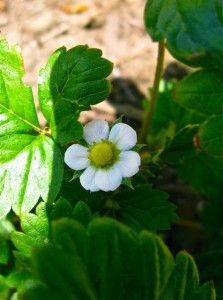 Alpine strawberry blossoms â“’ 2010 Michaela at TGE
Alpine strawberry blossoms â“’ 2010 Michaela at TGE
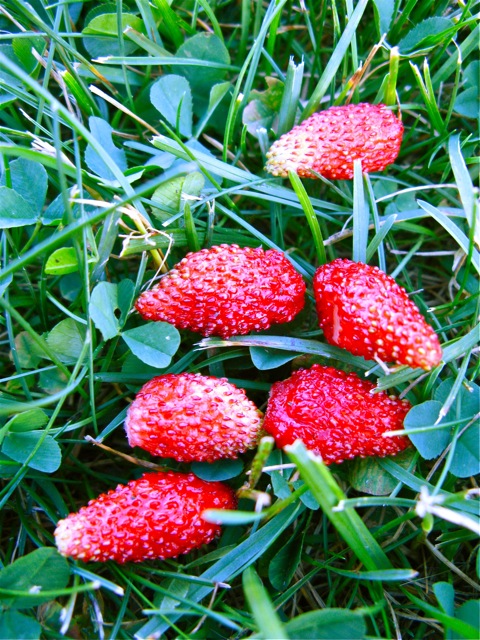 Frais des Bois at harvest â“’ 2010 Michaela at TGE
Frais des Bois at harvest â“’ 2010 Michaela at TGE
Competition for alpine strawberries comes in many forms; from weeds and insects to chipmunks, mice and birds. In my garden, the boisterous mocking bird clan living in the adjacent scrub seems particularly interested my strawberry crop this year. I do love their singing and bug catching, but I wish the mocking birds, robins and other winged-robbers would stay away from my strawberries! Now, don’t you feel too bad for my feathered friends – they have plenty of wild elderberries (Samubus canadensis), bramble berries and bugs to feast upon. If birds are snagging your berries, you can always cover them with safe Bird Netting, which allows air flow and pollinating bees to fly in and out. Alternately you could use insect pop-ups (such as those linked below) set in place when berries are close to harvest, and then removed at intervals for critical wind and bee pollination. Slugs can be a real problem during rainy periods (copper edged raised beds, beer traps and diatomaceous earth are some commonly used deterrents), and insects –particularly sap beetles, tarnished plant bugs and bud weevils — are always an issue with strawberries of all kinds. Never apply an insecticide, even an organic insecticide, during bloom periods, as you will kill beneficial insects (including our precious honeybees) along with the less desirable, ‘bad bugs’.  For backyard berry growers, I advise hand-picking insects and the limited use of row covers (see below) when berries are close to ripe.
For more on berry growing, check out my review of Barbara Bowlings excellent Berry Grower’s Companion (linked here) available through Barnes & Noble online. And say tuned… More berry growing tips will be coming soon!
Containers with pockets, like the one pictured from Amazon above, are a great way to grow alpine strawberries.
***
Article and photographs, (excepting last four by affiliates), © 2010 Michaela at The Gardener’s Eden
All content on this site, (with noted exceptions), is the property of The Gardener’s Eden and may not be used or reproduced without prior written consent. Inspired by something you see here? Great! Please give credit where credit is due. It’s a small world and link-love makes for fond friendships. Stealing makes for bad dreams…
Do you enjoy visiting The Gardener’s Eden? You can help support this site by shopping through our affiliate links. A small percentage of any sale originating from The Gardener’s Eden site will go toward web hosting and maintenance costs. Thank you for your support!
***
5 Replies to “Ruby-Red, Fragrant Fraises des Bois: Life’s Sweetest Little Luxuries…”
Comments are closed.
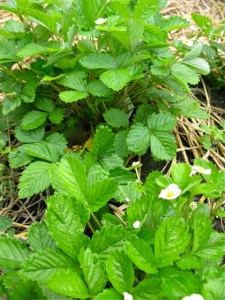



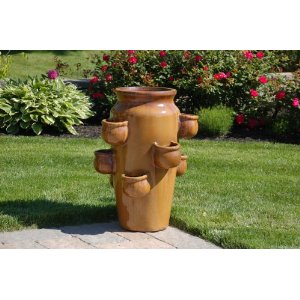

Hi!
Thanks for this post. I have one alpine strawberry plant that has produced all summer for many years. When is the best time to divide them, and is there a special way to do it? Thanks!
Hi there, sorry for the bit of delay. I was out enjoying the fireworks this evening. So, the best time to divide alpine strawberries is in early spring, as soon as ground has warmed and soil can be worked. Division in early fall is also possible, but riskier in cold climates. Roots need time to develop and settle in, so as to avoid heaving and freezing in winter. Dividing is possible after two years, but best accomplished between 3 and 5 years. Dig up the clump with a garden fork and shake the dirt from the stoloniferous root system. You will see several plants radiating from the central ‘mother’. Tease these root systems apart with your hands or a tool. Once divided, replant with at least 16″ between plants, in well prepared beds, (some growers space as much as 20″) apart. If your plant has separate ‘volunteers’, not linked to the main plant, then these are likely seedlings from berries. These may or may not grow true to cultivar. When I next divide my alpines, I will make it a point to take photos to post here. I hope this is helpful. If you need more information, let me know and I will try to guide you through. Best wishes for a happy holiday weekend… xo Michaela
Thank you, Michaela!
Michaela— it has been a couple years since we communicated, it’s Bill on Cape Cod. My friend, photographer Stuart Klipper put a picture of a bowl of Frais du Bois on his site, stating it’s on of his favorite flavors. I had not ever heard of them, but I faintly remember seeing them once and not knowing what they were. I’m on a role! And it led me to you! Purely by happenstance… Peace & Love, Bill
HI Bill – Good to ‘hear’ from you … Especially about Graises du Bois. Yes, yes… One of the finest summer fragrances! ;) M